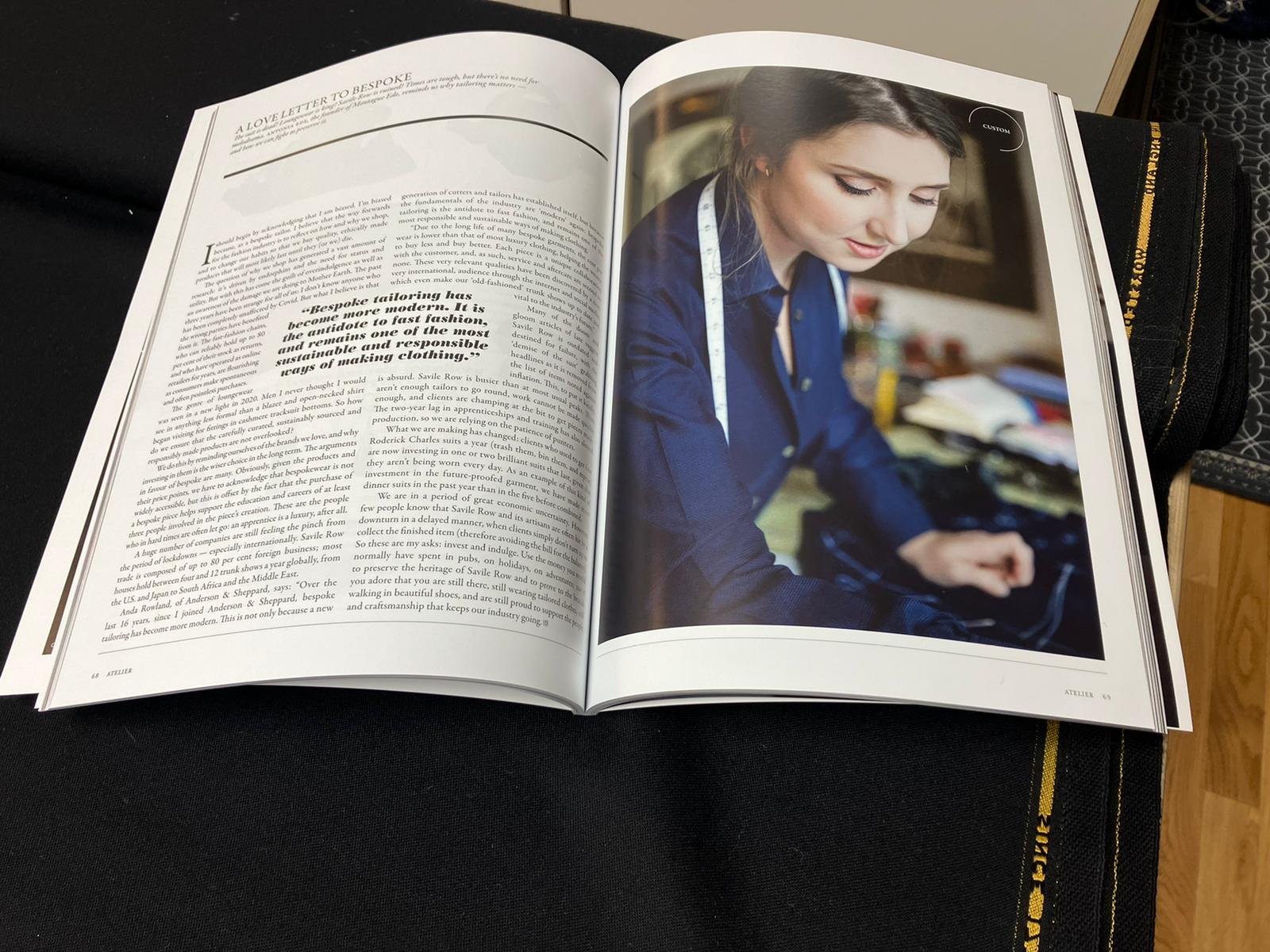The Rake: A love letter to bespoke
I should begin by explaining that I am biased. I’m biased because as a bespoke tailor, I believe that the way forward for the fashion industry is to reflect on how and why we shop, and to change our habits so that we buy quality, ethically made products that will most likely last until they (or we) die.
The question of why we shop has generated a vast amount of research: it’s driven by endorphins and the need for status and utility. But with this has come the guilt of overindulgence as well as an awareness of the damage we are doing to Mother Earth. The past three years have been strange for all of us: I don’t know anyone who has been completely unaffected by Covid. But what i believe is that the wrong parties have benefited from it. The fast-fashion chains, who can reliably hold up to 80% of their stock as returns, and who have operated as online retailers for years, are flourishing as consumers make spontaneous and often pointless purchases.
The genre of loungewear was seen in a new light in 2020. Men I never thought I would see in anything less formal than a blazer with an open-necked shirt began visiting for fittings in cashmere tracksuit bottoms. So how do we ensure that the carefully curated, sustainably sourced and responsibly made products are not overlooked?
We do this by reminding ourselves of the brands we love, and why investing in them is the wiser choice long term. The arguments behind bespoke are many. Obviously, given the products and their price points, we have to acknowledge that bespokewear is not widely accessible, but this is offset by the fact that the purchase of a bespoke piece helps support the education and careers of at least three people involved in the piece’s creation. These are the people who in hard times are often let go: an apprentice is a luxury, after all.
A huge number of companies are still feeling the pinch from the period of lockdowns - especially internationally. Savile Row trade is composed of up to 80% foreign business; most houses hold between four and 12 trunk shows a year globally from the U.S. and Japan to South Africa and the Middle East.
Anda Rowland, of Anderson and Sheppard agrees:
“Over the last 16 years, since I joined Anderson & Sheppard, bespoke tailoring has become more modern. This is not only because a new generation of cutters and tailors has established itself, but because the fundamentals of the industry are ‘modern’ again: bespoke tailoring is the antidote to fast fashion and remains one of the most responsible and sustainable ways of making clothing.
“Due to the long-life of many bespoke garments, the cost per wear is lower than that of most luxury clothing, helping the wearer to buy less and buy better. Each piece is a unique collaboration with the customer, and, as such, service and aftercare are second to none. These very relevant qualities have been discovered by a new, very international, audience through the internet and social media, which even make our ‘old-fashioned’ trunk shows very up to date and vital to the industry’s future.”
Many of the doom and gloom articles written of late suggest that Savile Row is outdated and destined for failure, with the ‘demise of the suit’ grabbing headlines as it is removed from the list of items noted against inflation. This, to put kindly, is absolutely absurd. Savile Row is busier than at most usual peaks. There aren’t enough tailors to go round, work cannot be made quickly enough, and clients are chomping at the bit to get pieces made. The two-year lag in apprenticeships and training has slowed production, so we are relying on the patience of punters.
What we are making has changed: clients who used to get four Roderick Charles suits a year (trash them, bin them and repeat) are now investing in one or two brilliant suits that last, given they aren’t being worn every day. As an example of this kind of investment in the future-proofed garment, we have made more dinner suits in the last year than in the five before combined.
We are in a period of great economic uncertainty. However, few people know that Savile Row and its artisans are often hit by a downturn in a delayed manner, when clients simply don’t turn up to collect the finished item (therefore avoiding the bill for the balance). So these are my asks: invest and indulge. Use the money you would normally have spent in pubs, on holidays, on adventures; use it to preserve the heritage of Savile Row and to prove to the brands you adore that you are still there, still wearing tailored clothes, still walking in beautiful shoes, and are still proud to support the people and craftsmanship that keeps our industries going.

